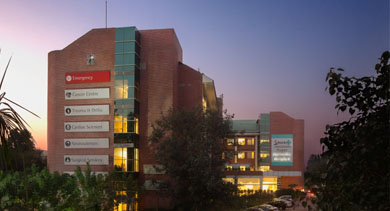Causes and Cure of Low Back Pain
Low back pain is one of the most common problems people have. About 60 – 80% of the adults. population has low back pain, and it is the second most common reason people go to the doctor. Low back problems affect the spine’s flexibility, stability, and strength, which can cause pain, discomfort, and stiffness.
Most back pain can be prevented by keeping your back muscles strong and making sure you practice good mechanics (like lifting heavy objects in a way that won’t strain your back)
Over 80% of the population will suffer from lower back pain during their lives. Low back pain is the most perplexing problem of man. Almost everyone over the age od 40 years of age has had some serious episode of low back pain. Most cases of lower back pain can be linked to a general cause—such as muscle strain, injury, or overuse—or can be attributed to a specific condition of the spine, most commonly:
- Herniated Disc
- Degenerative Disc Disease
- Spondylolisthesis
- Spinal Stenosis
- Osteoarthritis
What Is Low Back Pain?
Low back pain is a universal human experience , almost everyone has it at some point. The lower back, which starts below the ribcage, is called the lumbar region. Pain here can be intense and is one of the top causes of missed work. Fortunately, low back pain often gets better on its own. When it doesn’t, there are effective treatments.
Symptoms of Low Back Pain
Symptoms range from a dull ache to a stabbing or shooting sensation. The pain may make it hard to move or stand up straight. Acute back pain comes on suddenly, often after an injury from sports or heavy lifting. Pain that lasts more than three months is considered chronic. If your pain is not better within 72 hours, you should consult a doctor.
Symptoms of low back pain may include:
- Tenderness, pain, and stiffness in the lower back
- Pain that spreads into the buttocks or legs
- Having a hard time standing up or standing in one position for a long time
- Discomfort while sitting
- Weakness and tired legs while walking
Diagnosis and Treatment of Low Back Pain
When determining the underlying cause of low back pain, both the type of low back pain and the area of pain distribution help guide the physician in making a preliminary diagnosis and determining the appropriate treatment plan. A detail history regarding the nature of pain, its onset (whether acute, insidious and so on), aggravating factors, factors which diminish the pain, the description and characteristics of the pain should be taken.
Getting an accurate diagnosis of the cause of low back pain is often more challenging than many people expect and often will involve a combination of a thorough patient history and physical exam as well as diagnostic tests. History of previous back pain, injuries or surgeries need to be obtained. A history of psychiatric disorders, alcohol dependence and psychosocial history needs to be noted.
Investigations
To help your doctor diagnose the source of low back pain, be specific in describing the type of pain, when it started, related symptoms, and any history of chronic conditions. Your doctor will probably not need to order X-rays, CT(Computed Tomography) or MRI(Magnetic Resonance Imaging) scans before starting treatment. Of the two, MRI is the modality of choice.
Treatment
Treatment for lower back pain depends upon the patient’s history and the type and severity of pain. The vast majority of lower back pain cases get better within six weeks without surgery, and lower back pain exercises are almost always part of a treatment plan.
Rest: Ceasing activity for a few days allows injured tissue and even nerve roots to begin to heal, which in turn will help relieve lower back pain. However, more than a few days of rest can lead to a weakening of the muscles, and weak muscles have to struggle to adequately support the spine. Patients who do not regularly exercise to build strength and flexibility are more likely to experience recurrent or prolonged lower back pain.
Heat and Ice Packs: Heat and/or cold therapy helps relieve most types of low back pain by reducing inflammation. Often patients use ice, but some prefer heat. Both may be used alternately.
Medications: A wide variety of over-the-counter and prescription medications is available to help reduce lower back pain. Many medications reduce inflammation, which is often a cause of pain, while others work to inhibit the transmission of pain signals from reaching the brain. Each medication has multiple unique risks, possible side effects and drug (or food or supplement) interactions, which need to be evaluated by a physician.
Surgery: In the presence of neurological symptoms or deficit or intractable pain, surgical intervention is indicated. Common conditions needing surgery are disc disease, spinal canal stenosis and unstable vertebral articulation.


